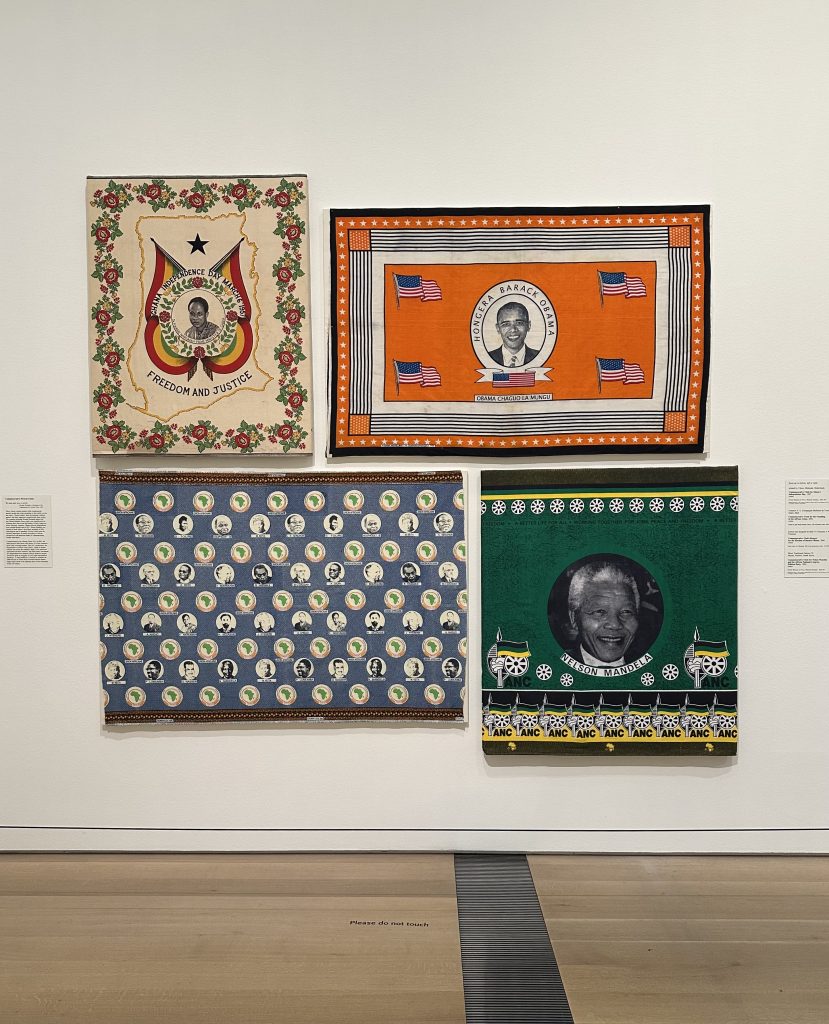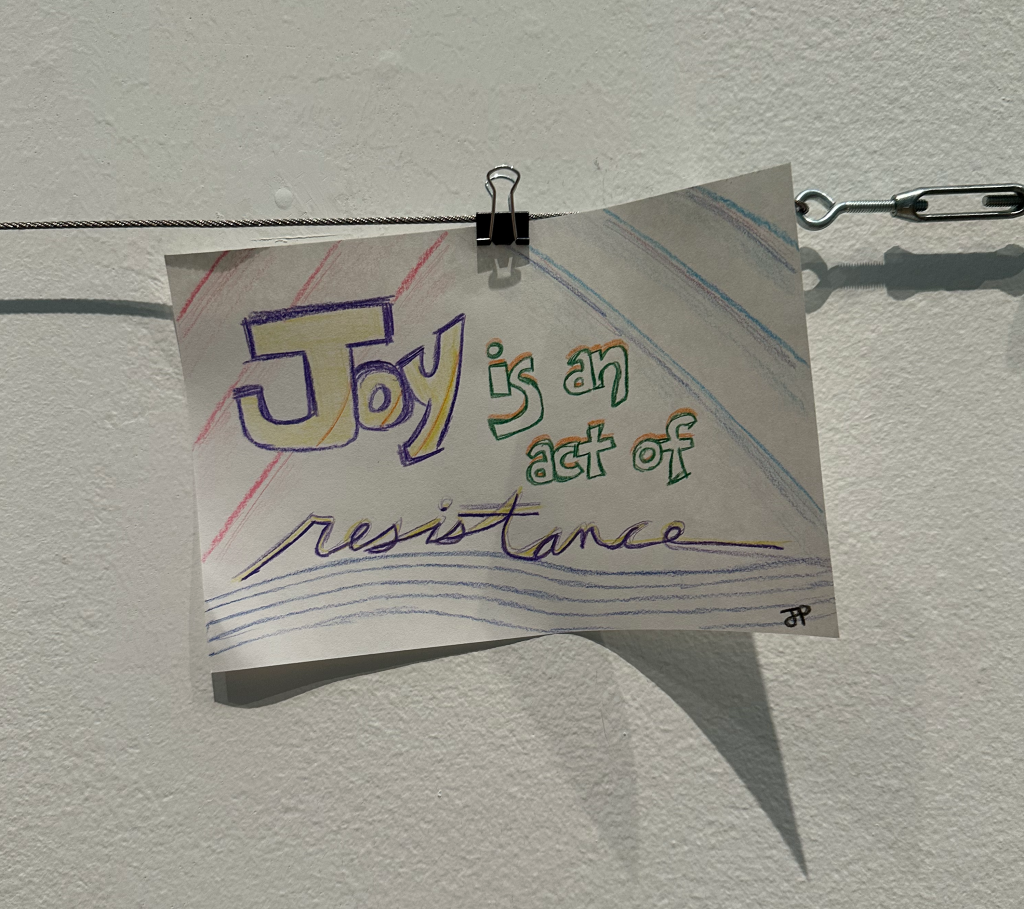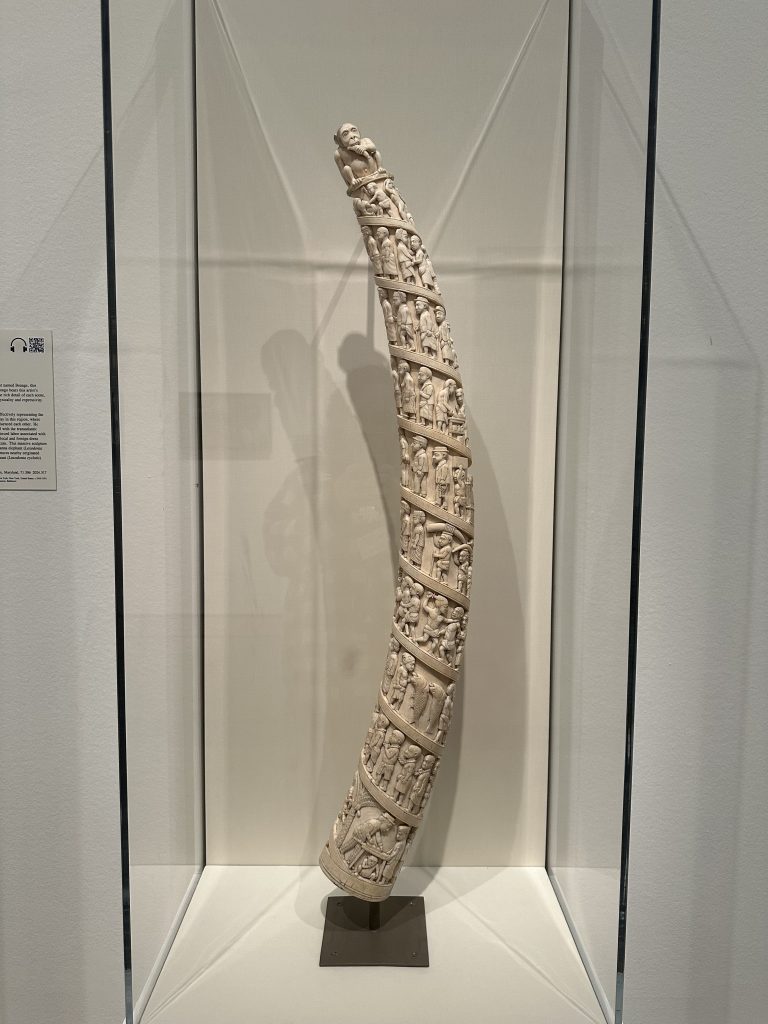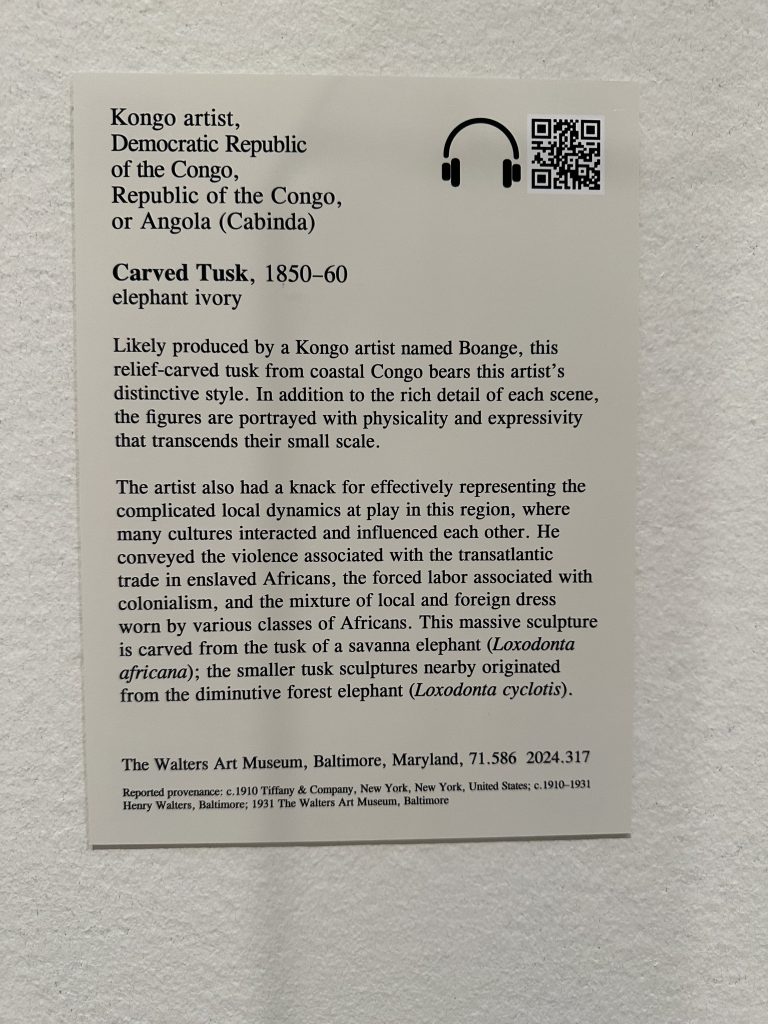Recently, I was given the opportunity to visit the St. Louis Art Museum (SLAM) and see their temporary exhibit Narrative Wisdom and African Art, which ran from October 19, 2024–February 16, 2025, a few weeks before it closed. Curated by Nichole N. Bridges, the Morton D. May Curator of the Arts of Africa, Oceania, and the Americas, curatorial assistant Amy Clark and research assistant Elyse D. Schaeffer, the exhibit contains African art that tells oral and collective histories not through words, but through imagery. As the website states, “By underscoring the mutability of meanings associated with African narrative arts, the exhibition challenges Western constructs of narrative.” While the exhibition featured fantastic pieces that did challenge Western notions of storytelling, it felt disjointed and almost lacking in a sense.

This was my first trip to SLAM despite having lived in St. Louis for about 2 years in total. Thankfully, I was with others who had been to the museum, and they were able to lead me, as finding the exhibition may be tricky for those entering from the main hall. Located in Taylor Hall in the East Building, the exhibition is the only section of the museum that is not free. Once visitors get their tickets from the desk, which is located just near the exhibition entrance along with a coat check and a bathroom, they can begin the exhibition. Visitors are greeted by a bright blue wall that displays the title of the exhibition, to the left of which is a few paragraphs that discusses oral traditions and how they can be told through art. As visitors enter the exhibition to a small room, painted in the same bright blue, they are met with modern music that includes the sounds of the ocean and tradition African beats. This music is a piece of art in the exhibition. Ties That Bind, is a musical work by Emeka Ogboh that incorporates thumb piano, the main instrument featured in the room.

Upon exiting this room, visitors enter the main exhibition space and are greeted by a bright yellow half wall displaying intricately carved doors. This is the beginning of “Leadership and Powerplay,” a section that displays art that was commissioned by rulers or made in their honor. Following this is “Memory: Place and Commemoration,” which displays pieces that focus on telling the story of a particular place. “Foretelling: Destiny and Healing,” comes next and contains artwork that represents divination traditions. The final section, “Ancestral Wisdoms and Allegory,” features pieces that depict inherited wisdom in new ways.

As someone who works in museum education, one of my favorite parts of the exhibition was what they call the Explore Lab. Located in the back of the exhibition, this section has reading material for all ages and features cards with prompts that help promote discussions about the exhibit. Spaces like these give visitors a place to sit and reflect upon what they have seen. I am a firm believer that art is a fantastic way to express emotions, and this space offers visitors the chance to do that. It was evident by the art pieces left, that many people had taken advantage of this space and were excited about sharing what they learned.

The text in the exhibition was quite good, although a bit long at times, it provided helpful information for visitors to understand each piece they were seeing. The one issue I did have with the text was the pieces of text that introduced each section. These were placed in strange location relative to the way visitors would naturally flow through the gallery space. They were often placed on a strip of color to help them stand out, but I often walked by them without even realizing.


The main exhibit space, while a decent size, feels almost like a winding maze. The many half walls and display cases in the middle of rooms makes you feel like you are always dodging something. While the space is quite large, it only has one bench. This may make the exhibit difficult to view for some visitors with mobility issues, but they did seem to have folding stools that visitors could carry around it needed. The aisles were large enough to move a wheelchair through, but it may have been difficult to do so.
Overall, I did enjoy the exhibit, and the pieces featured in the exhibit were incredible, but the way in which the exhibition was presented felt disjointed. While all the pieces told oral traditions in some way, none of the sections really felt connected. The pieces did do an excellent job in challenging Western notions of how oral traditions can be told in non-traditional ways, but they were laid out in a way that made me feel confused at times. Perhaps it was just my history brain, but seeing modern tapestries of President Obama next to intricately carved chairs that were hundreds of years old could feel disorienting at times.
Leave a Reply